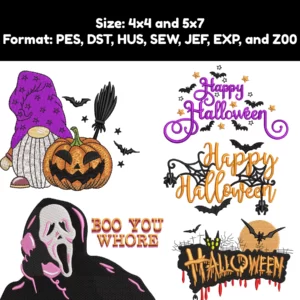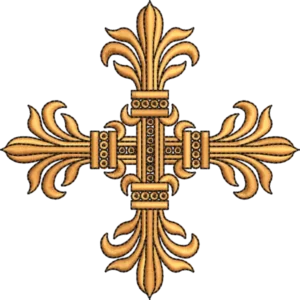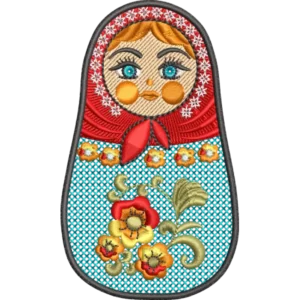Metallic embroidery thread adds a touch of elegance and glamour to any embroidery project. However, embroiderers often encounter the frustrating issue of thread breakage when using metallic threads.
Whether you are a beginner or an experienced embroiderer, understanding the reasons behind this problem and learning how to prevent it can save you time, effort, and frustration.
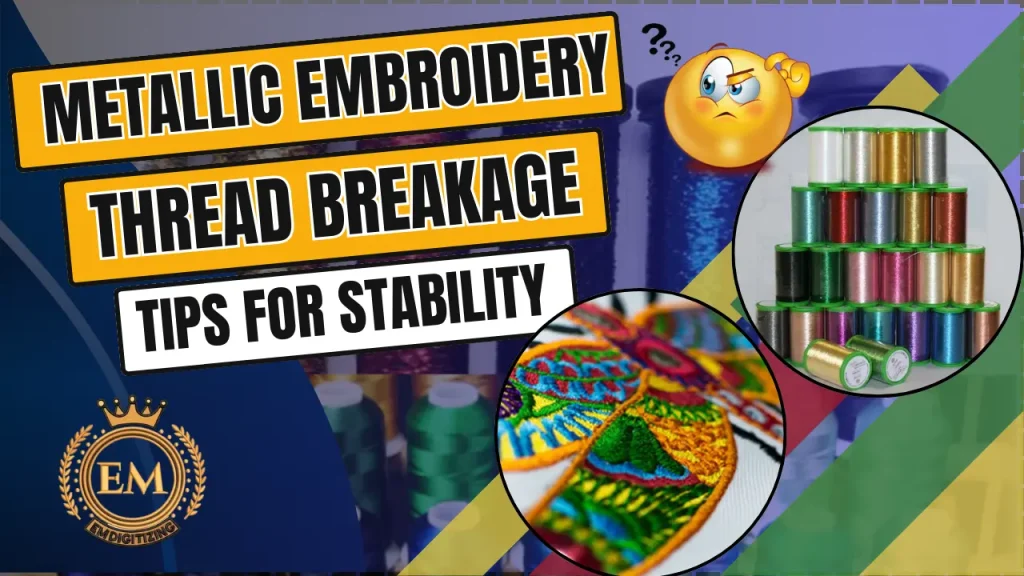
In this article, we will delve into the world of metallic thread and explore the common causes of thread breakage.
10 Compelling Reasons Why You Need Custom Embroidery Digitizing
What is a Metallic Embroidery Thread?
If you’ve ever seen those shiny, eye-catching threads that add a touch of glamour to embroidery projects, then you’re probably familiar with this thread type.
Metallic thread is a type of specialty thread that is made with a core of polyester or nylon and wrapped with a metallic foil. It comes in various colors and adds a beautiful shimmer to embroidery designs.
Types of Metallic Embroidery Thread
There are different types of metallic threads available in the market, each with its own unique characteristics. Some popular types include:
Smooth metallic thread: This type of metallic thread has a smooth texture and is great for adding a subtle shine to embroidery projects.
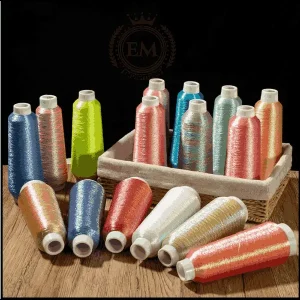
Textured metallic thread: If you’re looking for a more pronounced effect, textured metallic thread is the way to go. It has a textured surface that reflects light beautifully and creates a more dramatic look. For example, metallic gold embroidery thread.
Blended metallic thread: Blended metallic thread combines metallic and non-metallic fibers, resulting in a thread with a unique texture and appearance. It’s perfect for creating dimension and depth in embroidery designs.
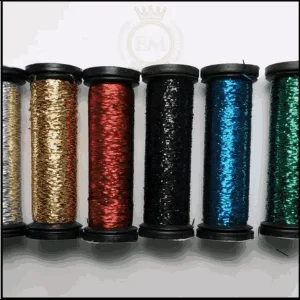
Common Reasons for Metallic Embroidery Thread Breakage
This thread type breakage is a common issue that can frustrate even the most experienced embroiderers, often attributed to its unique properties and the demands of working with it.
Poor Thread Quality
One of the most common reasons why metallic thread breaks is due to poor thread quality. Cheap or low-quality threads may not be strong enough to withstand the rigors of embroidery, leading to frequent breakages.
Investing in high-quality metallic thread can make a world of difference in the durability of your stitches.
Incorrect Thread Tension
Thread tension plays a crucial role in embroidery, and metallic thread is no exception. If the tension is too tight, it can put excessive strain on the thread, causing it to break.
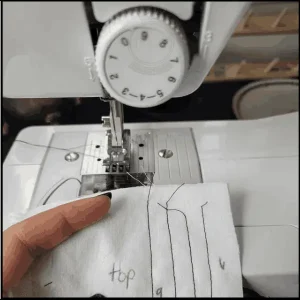
On the other hand, if the tension is too loose, the thread may not be properly secured in the fabric, resulting in breakage. Finding the right balance is key to preventing thread breakage.
Inappropriate Needle Selection
Choosing the right needle is essential for successful embroidery, and using the wrong needle can lead to thread breakage.
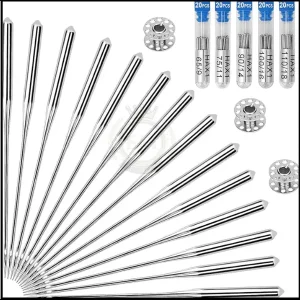
When working with metallic thread, it’s important to select a needle that has a larger eye to accommodate the thickness of the thread.
Using a needle with a small eye can cause friction and break the delicate metallic fibers.
Improper Handling and Storage
How you handle and store your metallic thread can also affect its durability. Rough handling, such as pulling or tugging the thread, can weaken it and increase the likelihood of breakage.
Similarly, improper storage in humid or damp conditions can cause the metallic foil to deteriorate, making the thread more prone to breaking. Treat your metallic thread with care and store it in a cool, dry place to maintain its quality.
Thread Tension and Its Impact on Metallic Embroidery Thread
Thread tension plays a pivotal role in the performance of metallic thread, directly influencing the quality of the stitch and the likelihood of thread breakage.
Understanding the Importance of Thread Tension
Thread tension refers to the amount of resistance applied to the thread as it passes through the fabric.
It is crucial in embroidery because it determines the appearance and durability of the stitches. Proper tension ensures that the stitches are formed evenly and securely, reducing the chances of thread breakage.
Adjusting Thread Tension for Metallic Thread
When working with metallic thread, it’s important to adjust the thread tension to accommodate its unique properties.
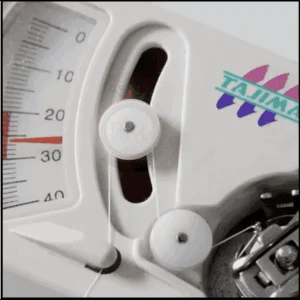
Generally, loosening the tension slightly can help reduce the strain on the thread and minimize breakage.
However, it’s essential to test different tension settings on scrap fabric before starting your project to find the optimal balance.
Needle Selection and Its Role in Reducing Thread Breakage
Needle selection is a critical factor in minimizing thread breakage, especially when working with delicate materials like metallic thread.
Choosing the Right Needle
Selecting the right needle type is crucial for preventing thread breakage when working with metallic thread. Opt for a needle specifically designed for metallic threads, as they have larger eyes and smoother surfaces to minimize friction.
These needles allow the thread to glide through the fabric smoothly, reducing the chances of breakage.
Needle Size and Its Impact on Thread Breakage
Another factor to consider is the size of the needle. Choosing a needle that is too small can put excessive pressure on the metallic thread, leading to breakage.
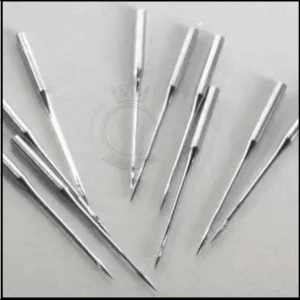
On the other hand, using a needle that is too large can cause the thread to slip and tangle.
Experiment with different needle sizes to find the one that works best for the specific metallic thread you’re using.
On the other hand, using a needle that is too large can cause the thread to slip and tangle.
Experiment with different needle sizes to find the one that works best for the specific metallic thread you’re using.
Proper Handling and Storing Techniques for Metallic Embroidery Thread
Proper handling and storing while embroidery with metallic thread are key to preserving its quality and minimizing issues like tangling and breakage.
Precautions When Handling This Thread
When it comes to metallic embroidery, a little extra care goes a long way. These shiny strands can be a bit finicky, so it’s important to handle them with caution.
Here are a few precautions to keep in mind:
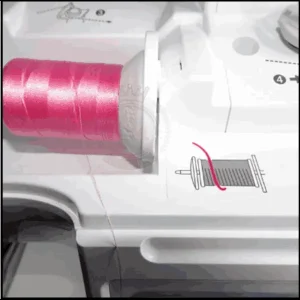
- Avoid pulling or tugging the thread too forcefully. Metallic thread is more delicate than regular embroidery thread, so try to handle it gently to prevent breakage.
- Be mindful of sharp edges or rough surfaces that the thread could catch on. If you’re working on a project that has snag-prone elements, consider using a different type of thread.
- Keep your hands clean and dry. Oils, lotions, and sweat can reduce the thread’s strength and cause it to break more easily.
Storing Metallic Thread Correctly
Storing your metallic thread properly can help prolong its lifespan and reduce the chances of breakage. Here are a few tips for keeping your thread in top shape:
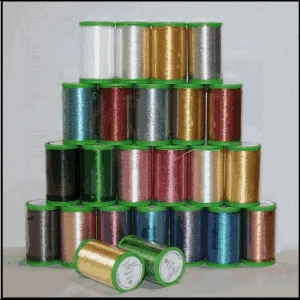
- Store your metallic thread in a cool, dry place away from direct sunlight. Excessive heat or humidity can cause the thread to become brittle or fade in color.
- Avoid tightly winding the thread around spools or bobbins. Instead, consider using a thread rack or a thread organizer to prevent tangling and minimize stress on the thread.
- If you’re not using the thread for an extended period, consider sealing it in an airtight container to protect it from dust and moisture.
Tips and Tricks for Preventing Metallic Embroidery Thread Breakage
Navigating the challenges of this thread type breakage requires a blend of knowledge and technique.
Using Lubricants or Conditioners
Sometimes, a little lubrication can go a long way in preventing thread breakage. You can try applying a small amount of thread conditioner or silicone lubricant to the metallic thread before using it.
This can help reduce friction and minimize the chances of breakage as the thread glides through the fabric.
Minimizing Friction During Embroidery
Friction is the enemy of metallic thread. To minimize this pesky foe, you can try the following techniques:
- Use a larger needle with a larger eye. This will reduce friction as the thread passes through the needle, decreasing the likelihood of breakage.
- Slow down your machine’s speed. Running the embroidery machine at high speeds can generate more friction, so slowing it down can help reduce stress on the thread.
- Consider using a specialized metallic needle designed specifically for metallic threads. These needles have a larger eye and a larger groove, allowing the thread to pass through more smoothly.
Proper Machine Maintenance and Cleaning
Regular maintenance and cleaning of your embroidery machine can also contribute to preventing thread breakage. Here are a few tips to keep in mind:
- Clean the machine regularly to remove any lint, dust, or debris that could accumulate and potentially cause thread breakage.
- Check the tension settings on your machine. Adjusting the tension appropriately for the metallic thread can help prevent excessive strain on the thread, reducing breakage.
- Use a good quality thread stand to ensure the thread feeds smoothly into the machine without getting tangled or twisted.
Conclusion
In conclusion, metallic embroidery thread can add a touch of sparkle and glamour to your projects, but it requires a little extra care.
By handling and storing the thread properly, using lubricants or conditioners, minimizing friction, and maintaining your embroidery machine, you can reduce the chances of thread breakage.
Remember, troubleshooting thread breakage issues in metallic embroidery is a process of elimination.
By identifying the source of the problem and implementing the appropriate solutions, you can overcome these challenges and create stunning, shiny masterpieces.
So go ahead, embrace the glitter, and let your creativity shine!
EMdigitizing: Embroidery Digitizing Expert At Your Service
If you are interested in any kind of embroidery project, then EMdigitizing is the best option for you. We offer embroidery digitizing and vector art services with a fast turnaround time. You can also visit and check our website as well as our best services.
We also offer a great 50% discount on all our services for our respected first-time clients. We also offer free quotes generated in just 5 minutes.
You should grab this limited-time offer and take your embroidery project to the next level with EMdigitizing.
If you’ve any queries regarding this topic, you can ask them. Thank you for taking the time to read this article.
Frequently Asked Questions:
To machine embroider with metallic thread, ensure your machine is threaded correctly, reduce the tension slightly, use a special metallic needle, and sew at a slower speed to prevent breakage and achieve smooth stitches.
Using metallic embroidery thread involves selecting a design with less density, employing a topstitch or metallic needle, and applying thread nets and silicone lubricants to manage the thread’s delicacy and avoid snags or breaks.
For metallic thread, a size 90/14 metallic needle is recommended as it has a larger eye and a special coating to accommodate the thread’s fragility, reducing friction and breakage during embroidery.
Kingstar metallic embroidery thread is made by ThreadArt, known for producing high-quality embroidery threads that offer excellent strength, durability, and a brilliant shine, enhancing the look of any embroidery project.
It is a process of converting design into digital file format that contains instructions of stitches that can be read by machine. Digitizing embroidery helps you to embroider quickly and efficiently. In fact, if digitization is done correctly it can be considered as an art form.

